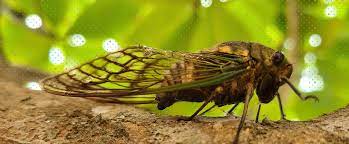Cicadas are familiar summer companions, their buzzing melodies filling the air as they emerge from their underground slumber. However, beyond their enchanting songs, these insects possess a remarkable secret: their unconventional method of urination. Unlike most insects, which release urine in droplets, cicadas expel jets of urine, a phenomenon that has long puzzled scientists. Now, researchers at the Georgia Institute of Technology have delved into the fluid dynamics behind cicadas’ unique urination, shedding light on this fascinating aspect of nature.
Led by Assistant Professor Saad Bhamla and his team, the study sought to understand the mechanics behind cicadas’ fluid excretion. Previous assumptions suggested that insects consuming xylem sap, such as cicadas, would excrete urine in droplets to conserve energy. However, observing cicadas in their natural habitat in Peru provided a rare opportunity to witness firsthand the insects emitting jets of urine, challenging established theories.
Contrary to expectations, cicadas’ voracious appetite for xylem sap necessitates efficient urine excretion, making jetting a more practical option than droplet formation. Additionally, despite their small size, cicadas are capable of producing urine jets, defying conventional limitations based on body size.
The study, published in the Proceedings of the National Academy of Sciences, represents a significant breakthrough in understanding fluid dynamics across different scales of life. By studying fluid ejection mechanisms from microscopic fungi to massive whales, the researchers developed a comprehensive framework for understanding this phenomenon’s diverse functions in nature.
Beyond its scientific implications, the research offers insights into bio-inspired engineering and biomedical applications. Cicadas, as the smallest animals capable of producing high-speed jets, present opportunities for developing miniature jetting systems in robotics and microfluidic devices. Moreover, the ecological impact of cicadas’ urine jets, considering their vast population numbers, warrants further exploration.
Professor Bhamla envisions that this research will not only deepen our understanding of biological functions but also inspire innovative technologies. By unraveling the mysteries of cicadas’ unique urination, scientists can unlock new avenues for advancements in fluid dynamics research and bio-inspired engineering.
The study illuminates the intricate workings of nature’s fluid dynamics, showcasing the remarkable adaptations of cicadas and their significance in scientific exploration. As summer unfolds and cicadas serenade us with their songs, let us marvel at the hidden wonders of these remarkable insects, whose urination habits offer valuable insights into the mysteries of the natural world.
